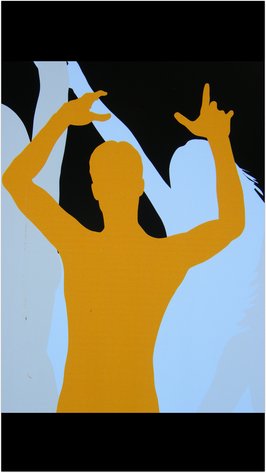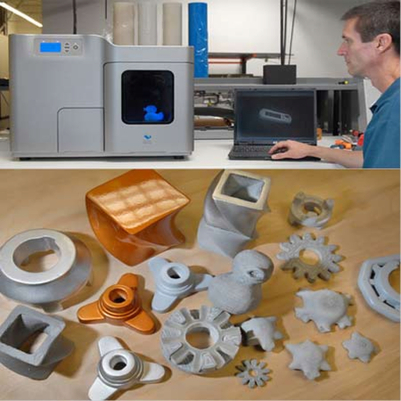|
Real power comes from being indispensable.
Indispensability comes from being a switchboard, parceling out as much information, contacts, and goodwill to as many people—in as many different worlds—as possible It’s a sort of career karma. How much you give to the people you come into contact with determines how much you’ll receive in return. In other words, if you want to make friends and get things done, you have to put yourself out to do things for other people—things that require time, energy, and consideration. Successfully connecting with others is never about simply getting what you want. It’s about getting what you want and making sure that people who are important to you get what they want first. Often, that means fixing up people who would otherwise never have an opportunity to meet. The best sort of connecting occurs when you can bring together two people from entirely different worlds. The strength of your network derives as much from the diversity of your relationships as it does from their quality or quantity. “People who have contacts in separate groups have a competitive advantage because we live in a system of bureaucracies, and bureaucracies create walls,” says Burt. “Individual managers with entrepreneurial networks move information faster, are highly mobile relative to bureaucracy, and create solutions better adapted to the needs of the organization.” Performing social arbitrage when your financial and relational resources are thin is actually not too big a hurdle. The solution is knowledge, one of the most valuable currencies in social arbitrage. Knowledge is free—it can be found in books, in articles, on the Internet, pretty much everywhere, and it’s precious to everyone. The ability to distribute knowledge in a network is a fairly easy skill to learn. So easy, in fact, you should get started today. Identify some of the leading thinkers and writers in your industry. Do these figures have any new books on the market? Look at what’s hot on the nonfiction New York Times bestseller list. Or for business bestsellers, check out the Wall Street Journal’s list in the Personal Journal section on Friday. Buy the book, read it, and take some notes summarizing the Big Idea, a few of its interesting studies or anecdotes, and why it’s relevant to the people you’re thinking about passing your knowledge on to. You’ve just created your own Big Idea of the Month Cliffs Notes (or whatever snazzy title you choose). Now pick a few people, some whom you know well and some you don’t, and e-mail them your work. All you have to say is “Here are some cool ideas I think you’d like to be on top of.” To paraphrase Dale Carnegie: You can be more successful in two months by becoming really interested in other people’s success than you can in two years trying to get other people interested in your own success. Never Eat Alone: And Other Secrets to Success, One Relationship at a Time by Keith Ferrazzi, Tahl Raz "Conversation is an acquired skill. If you have the determination and the proper information, just like any other skill, it can be learned.
But the fact is that small talk—the kind that happens between two people who don’t know each other—is the most important talk we do. Language is the most direct and effective method for communicating our objectives. So what should your objective be in making small talk? Good question. The goal is simple: Start a conversation, keep it going, create a bond, and leave with the other person thinking, “I dig that person,” or whatever other generational variation of that phrase you want to use. A lot has been said about how one should go about doing that. But in my opinion, the experts have gotten wrong the one thing that works the best. The first thing small-talk experts tend to do is place rules around what can and can’t be said. They claim that when you first meet a person, you should avoid unpleasant, overly personal, and highly controversial issues. Wrong! Don’t listen to these people! Nothing has contributed more to the development of boring chitchatters everywhere. The notion that everyone can be everything to everybody at all times is completely off the mark. Personally, I’d rather be interested in what someone was saying, even if I disagreed, than be catatonic any day. When it comes to making an impression, differentiation is the name of the game. Confound expectation. Shake it up. How? There’s one guaranteed way to stand out in the professional world: Be yourself. I believe that vulnerability—yes, vulnerability—is one of the most under appreciated assets in business today. Too many people confuse secrecy with importance. Business schools teach us to keep everything close to our vest. But the world has changed. Power, today, comes from sharing information, not withholding it. More than ever, the lines demarcating the personal and the professional have blurred. We’re an open-source society, and that calls for open-source behavior. And as a rule, not many secrets are worth the energy required to keep them secret. Being up front with people confers respect; it pays them the compliment of candor. The issues we all care most about are the issues we all want to talk about most. Of course, this isn’t a call to be confrontational or disrespectful. It’s a call to be honest, open, and vulnerable enough to genuinely allow other people into your life so that they can be vulnerable in return. When you realize the best icebreaker is a few words from the heart, the act of starting a conversation becomes far less daunting. Again and again I’m surprised by the power of the vulnerability principle in the art of making small talk. The best way to become good at small talk is not to talk small at all. How another person perceives you is determined by a number of things you do before you utter your first word. • First, give the person a hearty smile. It says, “I’m approachable.” • Maintain a good balance of eye contact. If you maintain an unblinking stare 100 percent of the time, that qualifies as leering. That’s plain scary. If you keep eye contact less than 70 percent of the time, you’ll seem disinterested and rude. Somewhere in between is the balance you’re looking for. • Unfold your arms and relax. Crossing your arms can make you appear defensive or closed. It also signals tension. Relax! People will pick up on your body language and react accordingly. • Nod your head and lean in, but without invading the other person’s space. You just want to show that you’re engaged and interested. • Learn to touch people. Touching is a powerful act. Most people convey their friendly intentions by shaking hands; some go further by shaking with two hands. My favorite way to break through the distance between me and the person I’m trying to establish a bond with is to touch the other person’s elbow. It conveys just the right amount of intimacy, and as such, is a favorite of politicians. It’s not too close to the chest, which we protect, but it’s slightly more personal than a hand. One helpful technique I use is to try and envision myself as a mirror to the person with whom I’m speaking. What’s the cadence of their speech? How loudly do they talk? What’s their body language? By adjusting your behavior to mirror the person you are talking to, he’ll automatically feel more comfortable. This doesn’t mean, of course, that you should be disingenuous. Rather, it shows that you’re particularly sensitive to other people’s emotional temperaments. You’re just tweaking your style to ensure that the windows remain wide open. How do you conclude a conversation? During meetings and social gatherings, I’m often quite blunt. I’ll mention something meaningful that was said in the course of our conversation and say, “There are so many wonderful people here tonight; I’d feel remiss if I didn’t at least try and get to know a few more of them. Would you excuse me for a second?” People generally understand, and appreciate the honesty. There’s also always the drink option. I’ll say: “I’m going to get another drink. Would you like one?” If they say no, I don’t have an obligation to come back. If they say yes, I’ll be sure to enter into another conversation on my way to the bar. When I return with a drink, I’ll say, “I just ran into some people you should meet. Come on over.” As William James pointed out, “The deepest principle in human nature is the craving to be appreciated.” You should be governed by the idea that one should seek first to understand, then to be understood. We’re often so worried about what we’re going to say next that we don’t hear what’s being said to us now. There are few ways to signal to your listener that you are interested and listening actively. Take the initiative and be the first person to say hello. This demonstrates confidence and immediately shows your interest in the other person. When the conversation starts, don’t interrupt. Show empathy and understanding by nodding your head and involving your whole body in engaging the person you’re talking with. Ask questions that demonstrate (sincerely) you believe the other person’s opinion is particularly worth seeking out. Focus on their triumphs. Laugh at their jokes. And always, always, remember the other person’s name. Nothing is sweeter to someone’s ears than their own name. At the moment of introduction, I visually attach a person’s name to their face. Seconds later, I’ll repeat the person’s name to make sure I got it, and then again periodically throughout the conversation. If All Else Fails, these Five Words That Never Do “You’re wonderful. Tell me more.” Never Eat Alone: And Other Secrets to Success, One Relationship at a Time by Keith Ferrazzi, Tahl Raz Conferences are good for mainly one thing.
No, it’s not the coffee and cookies at breaks. It’s not even pricey business enlightenment. They provide a forum to meet the kind of like-minded people who can help you fulfill your mission and goals. Before deciding to attend a conference, I sometimes informally go so far as using a simple return-on-investment-type thought process. Is the likely return I’ll get from the relationships I establish and build equal to or greater than the price of the conference and the time I spend there? If so, I attend. If not, I don’t. It’s that simple. That may seem like an awfully pragmatic view of conferences, but it works. These executives are far from alone in holding such attitudes—stems from an all-too-common misperception that conferences are places to find insight. Wrong. Real, actionable insight mostly comes from experience, books, and other people. Roundtable discussions and keynote speeches can be fun, even inspirational, but rarely is there the time to impart true knowledge. But there may be no better place to extend your professional network and, on occasion, get deals done. Let me give you an example based on sales. In the old model of selling, 80 percent of a salesperson’s time went into setting up meetings, giving a presentation, and trying to close a deal. The other 20 percent was spent developing a relationship with the customer. Today, we focus mostly on relationship selling. Smart salespeople—in fact, smart employees and business owners of all stripes—spend 80 percent of their time building strong relationships with the people they do business with. The slickest PowerPoint presentation can’t compete with the development of real affection and trust in capturing the hearts and minds of other people. Don’t think of your next conference as a business-related retreat. Think of it as a well-coordinated campaign to further your mission. Here are the rules I follow at each and every event I attend: Help the Organizer (Better Yet, Be the Organizer) Conferences are logistical nightmares. There are a thousand different things that go into pulling off a successful business gathering. The mess that can ensue is an opportunity for you to come in and help out—and become an insider in the process. Once you’re on the inside, you can find out who will be attending and what the hot events will be. And you’ll find yourself at all those unlisted dinners and cocktail parties that are thrown for the conference poobahs. The key is to work hard to make the conference a success. Listen. Better Yet, Speak Are you someone who thinks becoming a speaker is a big deal? That’s true for a lot of people. I’m here to tell you it’s not as tough as you might think, but it is also perhaps more important than you can imagine Nothing frightens the daylights out of some people like the thought of spending fifteen minutes talking about what they do in front of an audience, even if the audience is made up of generally receptive folks (like family and friends!). Calm yourself. First, you should know that giving speeches is one of the easiest and most effective ways to get yourself, your business, and your ideas seen, heard of, and remembered, and you don’t need to be Tony Robbins to find yourself a forum of people willing to hear you out. How many people find themselves in front of an audience on any given day? The numbers are shocking. There are thousands of forums and events going on—for every imaginable reason—each and every day. All these forums need a warm body to say something the slightest bit inspiring or insightful to their guests. Most speakers, unfortunately, deliver neither. The American Society of Association Executives (ASAE) says the meetings industry is a nearly $83 billion market, with over $56 billion being spent annually on conventions and seminars alone. That ranks conferences—get this!—as the twenty-third-largest contributor to the Gross National Product. The point here is that the opportunity to speak exists everywhere, paid or unpaid. It’s fun, it can be profitable, and there’s no better way to get yourself known—and get to know others—at an event. Study after study shows that the more speeches one gives, the higher one’s income bracket tends to be. How do you become a speaker at a conference? First, you need something to say: You need content (which I’ll discuss in another chapter). You need to develop a spiel about the niche you occupy. In fact, you can develop a number of different spiels, catering to a number of different audiences (again, I’ll get to that later). What if you are at a conference and you’re not a speaker? There are other places to distinguish yourself. Remember, you’re not there just to learn new things from other people—you’re there to meet others and have others meet and remember you. When sessions open up for questions, try and be among the first people to put your hand in the air. A really well-formed and insightful question is a mini-opportunity to get seen by the entire audience. Be sure to introduce yourself, tell people what company you work for, what you do, and then ask a question that leaves the audience buzzing. Ideally, the question should be related to your expertise so you have something to say when someone comes up and says, “That was an interesting question.” Guerrilla Warfare: Organize a Conference Within a Conference True commandos aren’t restricted by the agenda that they receive at registration. Who says you can’t arrange your own dinner while at the conference, or put together an informal discussion on a particular topic that matters to you? Often, creating your own forum is the best way to assure that people you’re looking to meet will be in the same place at the same time. Ideally, you’d like to invite a stable of speakers to your dinner, which will provide a star-studded draw to your little event. Remember, even an unknown becomes a mini-star after their talk at an event. Draft Off a Big Kahuna If you get to know the most popular man or woman at the conference—the one who knows everyone—you’ll be able to hang with them as they circle through the most important people at the conference. Be an Information Hub Once you’ve created an opportunity to meet new people, establish yourself as an “information hub”—a key role of any good networker. How? Go beyond just memorizing the conference’s brochure. Identify information the people around you would like to know, and come prepared. Master the Deep Bump The bump is the main weapon in your conference commando arsenal. Reduced to its essence, it is the two minutes you’re given with someone you’re “bumping into” whom you are looking to meet. Your goal should be to leave the encounter with an invitation to reconnect at a later time. The bump, like other practices, is nuanced. The perfect bump is one that feels both fast and meaningful at the same time. I call this ideal a “deep bump.” Deep bumps are an effort to quickly make contact, establish enough of a connection to secure the next meeting, and move on. You’ve just paid a boatload of money to be at this conference (unless you’re a speaker, when it’s usually free!), and you want to meet as many people as you can in the time that you have. You’re not looking to make a best friend. You are looking, however, to make enough of a connection to secure a follow-up. Creating a connection between any two people necessitates a certain level of intimacy. In two minutes, you need to look deeply into the other person’s eyes and heart, listen intently, ask questions that go beyond just business, and reveal a little about yourself in a way that introduces some vulnerability (yes, vulnerability; it’s contagious!) into the interaction. All these things come together to create a genuine connection. Not possible, you exclaim. Ah, but I’ve seen it done and I do it. The deep bump is not just theoretical mumbo jumbo. There are some people who need just seconds, rather than minutes, to pull off a deep bump. Former President Bill Clinton, for instance, is the master. I’ve watched him up close as he works a line of well-wishers and fans (and sometimes, strident opponents). With each person, President Clinton will reach out to shake his or her hand. Most of the time, he’ll use two hands or clasp a person’s elbow to create instantaneous warmth. He’ll make direct eye contact and, in that fleeting moment, ask a personal question or two. I don’t know how many times I’ve heard different people from the same event comment about how incredible it was to be the sole focus of the man’s attention. And that’s even the Republicans. The profoundness of that connection doesn’t come from the President’s desire to impart his opinion or riff on policy. His goal is at once very simple and powerful. The President wants you to like him (so in his own now-famous words, he “feels” what you feel). When he shows in those brief moments that he likes and cares about you, the human response is to reciprocate. He is finely tuned in to the radio station that we each listen to, WIIFM, also known as What’s In It for Me? I never once heard Clinton ask for a vote or talk about himself when engaged in these quick, casual encounters. His questions always revolved around what the other person was thinking, what was troubling them. Know Your Targets You’re ready to bump. Now you just need someone to bump against. At each conference, I keep a list of three or four people I’d most like to meet on a folded piece of paper in my jacket pocket. I check off each person as I meet them. Beside their name, I’ll jot down what we talked about and make a note about how I’m going to contact them later. And, once you’ve met with and engaged someone, you find yourself chatting again and again throughout the conference. Breaks Are No Time to Take a Break Breaks are where the real work happens at a conference. Make sure and stake out the right place. Have you ever noticed how guests gather in the kitchen or some other central place when you have gatherings at home? One warm and centrally located spot is often the center of any party. The same holds true at a business gathering. Determine where most people will gather, or at least pass, and station yourself there. This might be near the food table, the bar, or the reception area. Be on your game during these times. U.S. News & World Report revealed Henry Kissinger’s technique for commanding a room: “Enter the room. Step to the right. Survey the room. See who is there. You want other people to see you.” Follow Up If you didn’t think I was a nut before, now it’s a certainty. I know I’ve told you to follow up already, but that’s how vitally important I think it is. So here it is again: follow up. After that, follow up again. Then, after you’ve done that, follow up once more. I don’t like to put it off or it might not get done. How many of you have cards from events that occurred months ago or even longer? That’s a lost opportunity. During speeches, I’ll sit in the back and write follow-up e-mails to the people I just met at the previous break. Everyone you talked with at the conference needs to get an e-mail reminding them of their commitment to talk again. I also like sending a note to the speakers, even if I didn’t get a chance to meet them. It’s the People, Not the Speakers You’ve probably already figured this rule out by now. I don’t often find the content of conferences particularly useful. I read a lot. I think about these subjects constantly and talk to a lot of people. By the time I get to a conference, I know the substance of what’s going to be said. Never Eat Alone: And Other Secrets to Success, One Relationship at a Time by Keith Ferrazzi, Tahl Raz Use your passions as a guide to which activities and events you should be seeking out to network11/16/2012
Shared interests are the basic building blocks of any relationship. Race, religion, gender, sexual orientation, ethnicity, or business, professional, and personal interests are relational glue. It makes sense, then, that events and activities where you’ll thrive are those built around interests you’re most passionate about. Friendship is created out of the quality of time spent between two people, not the quantity.
There is a misconception that to build a bond, two people need to spend a great deal of time together. This is not the case. Outside your family and work, you probably can count the people you see a great deal of in the course of a month on two hands. Yet, surely, you have more than ten friends. It is what you do together that matters, not how often you meet. That’s why you have to pay special attention to where you’re most comfortable and what activities you most enjoy. Usually it’s the events and activities you excel at that you’re most passionate about. So it makes sense to make these the focus of your efforts. For me, my love of food and exercise has led to the most amazing get-togethers. For others, it may be stamps, baseball cards, politics, or skydiving that brings you together. Make a list of the things you’re most passionate about. Use your passions as a guide to which activities and events you should be seeking out. Use them to engage new and old contacts. If you love baseball, for example, take potential and current clients to a ballgame. It doesn’t matter what you do, only that it’s something you love doing. Your passions and the events you build around them will create deeper levels of intimacy. Pay attention to matching the event to the particular relationship you’re trying to build. I’ve got an informal list of activities I use to keep in touch with my business and personal friends. Here are some things I like to do: 1. Fifteen minutes and a cup of coffee. It’s quick, it’s out of the office, and it’s a great way to meet someone new. 2. Conferences. If I’m attending a conference in, say, Seattle, I’ll pull out a list of people in the area I know or would like to know better and see if they might like to drop in for a particularly interesting keynote speech or dinner. 3. Invite someone to share a workout or a hobby (golf, chess, stamp collecting, a book club, etc.). 4. A quick early breakfast, lunch, drinks after work, or dinner together. There’s nothing like food to break the ice. 5. Invite someone to a special event. For me, a special event such as the theater, a book-signing party, or a concert is made even more special if I bring along a few people who I think might particularly enjoy the occasion. 6. Entertaining at home. I view dinner parties at home as sacred. I like to make these events as intimate as possible. To ensure they stay that way, I generally will invite only one or two people I don’t know that well. By dinner’s end, I want those people leaving my home feeling as if they’ve made a whole new set of friends, and that’s hard to do if it’s a dinner filled with strangers. Never Eat Alone: And Other Secrets to Success, One Relationship at a Time by Keith Ferrazzi, Tahl Raz For all his legendary success and greatness as a president, Abraham Lincoln lost all the time.11/13/2012
For all his legendary success and greatness as a president, Abraham Lincoln lost all the time. Lincoln experienced numerous business, political, and personal setbacks over his life. But he never let any of his failures discourage him from pursuing his goals. Lincoln failed in business. He failed as a farmer. He lost running for state legislature. He had a nervous breakdown. He was rejected for a job as a land officer. When he was finally elected to the legislature, he lost the vote to be speaker. He ran for Congress and lost. He ran for and lost a U.S. Senate seat. He ran for vice president and lost. He ran for the Senate and lost again. And, when he was finally elected president, the nation he was elected to lead broke apart. But by this time, all the activities, experiences, and people he came to know in the process helped him set a direction for that country that will stand as one of America’s great legacies. My point is, behind any successful person stands a long string of failures. But toughness and tenacity like Lincoln’s can overcome these setbacks. Lincoln knew the only way to gain ground, to move forward, to turn his goals into reality, was to learn from his setbacks, to stay engaged, and press on!
Never Eat Alone: And Other Secrets to Success, One Relationship at a Time by Keith Ferrazzi, Tahl Raz The dynamics of a network are similar to those of a would-be celebrity in Hollywood: Invisibility is a fate far worse than failure. It means that you should always be reaching out to others, over breakfast, lunch, whatever. It means that if one meeting happens to go sour, you have six other engagements lined up just like it the rest of the week. In building a network, remember: Above all, never, ever disappear. Keep your social and conference and event calendar full. As an up-and-comer, you must work hard to remain visible and active among your ever-budding network of friends and contacts.
His formula is not complicated, but it is rigorous. He talks to at least fifty people each day. He spends hours a week walking his company plant talking to employees up and down the ladder. If you send an e-mail to him or his assistant, you can be sure there will be a response within hours. He attributes his success to the blue-collar work ethic and sensibilities he was raised with by his father. About his more starched white-collar colleagues, he once told me that while he had learned what these people know, they would never have an opportunity to learn what he knew. How do I meet everyone I want to meet during the course of a week? Someone once remarked cynically, “I’d have to clone myself to take all the meetings you take.” “Ah, you’re onto something,” I responded. “I don’t clone myself. I clone the event.” Here’s what I mean. A few months ago, I flew into New York for a two-day business stint. There were a number of people I wanted to see: an old client and friend of mine who was the former president of Lego and was now trying to figure out what he wanted to do with the rest of his life, the COO of Broadway Video, with whom I wanted to discuss a new branded entertainment TV show for one of my clients, and a close friend that I hadn’t seen in too long. I had two days, three people I wanted to see, and only one available time slot to see them all. How do you manage a situation like this? I “cloned” the dinner and invited all of them to join me. Each would benefit from knowing the others, and I’d be able to catch up with all of them and perhaps even get some creative input about the new TV show. My friend, who has a fantastic sense of humor, would enjoy the group and add a little levity to what might have been just a stodgy business meeting. I asked my friend to join me a half hour in advance at the hotel I was staying at for a little one-on-one time. And if the details of the project I was discussing with the COO were private, I might schedule a little one-on-one time with him after dinner. The point is I’m constantly looking to include others in whatever I’m doing. It’s good for them, good for me, and good for everyone to broaden their circle of friends. Sometimes I’ll take potential employees for a workout and conduct the interview over a run. As a makeshift staff meeting, I’ll occasionally ask a few employees to share a car ride with me to the airport. I figure out ways to as much as triple my active working day through such multitasking. And, in the process, I’m connecting people from different parts of my “community.” The more new connections you establish, the more opportunities you’ll have to make even more new connections. As Robert Metcalfe, the inventor of Ethernet, says: The value of a network grows proportional to the square of the number of its users. In the case of the Internet, every new computer, every new server, and every new user added expands the possibilities for everyone else who’s already there. The same principle holds true in growing your web of relationships. The bigger it gets, the more attractive it becomes, and the faster it grows. That’s why I say that a network is like a muscle—the more you work it, the bigger it gets. Never Eat Alone: And Other Secrets to Success, One Relationship at a Time - by Keith Ferrazzi, Tahl Raz As I go through this book, great tips just keep popping up. I have always struggled with how to capture my network and then read this........ D
"First, I sat down and established a ninety-day, one-year, and three-year mission in my Networking Action Plan. Each goal required me to connect with and develop different parts of my network. To make these goals possible, I mapped out the most important players in both the online and games industries, from CEOs and journalists to programmers and academics. My goal was to get to know almost all of them within a year. To create excitement around our product, I wrote down a list of people I called “influentials”: the early adopters, journalists, and industry analysts that help spread the initial buzz about a product or service. Next, I made a list of potential customers, potential acquirers, and people who might be interested in funding us down the road. (In creating your own categories, each should correspond to your own goals.) When you make such lists, it’s important you name the actual decision makers, and not just an organization. The point here is to have a readily accessible and specific list of names. At the outset, concentrate on the people who are already part of your existing network. I bet you have no idea how vast and widespread it really is. As I noted in the previous chapter, take the time to list people such as: Relatives Friends of relatives All your spouse’s relatives and contacts Current colleagues Members of professional and social organizations Current and former customers and clients Parents of your children’s friends Neighbors, past and present People you went to school with People you have worked with in the past People in your religious congregation Former teachers and employers People you socialize with People who provide services to you. Next, I enter the gathered names into a database. (I tend to use Microsoft’s Outlook, but there are plenty of programs out there that are just as good.) I then create call sheets by region, listing the people I know and those I’d like to know. When I’m in a given town, I’ll try to phone as many people as I can. I have the numbers in my Palm and BlackBerry; both devices have unique and important functionality to me, so I’ve kept both. I also print out and carry these lists around with me wherever I go. They focus my efforts in cabs between meetings. I have something palpable to encourage me to reach out. Some of the lists you create will be related to your action plans; others are more general, helping you to stay connected. The way you organize your lists can be fluid. I have lists by geographical location, by industry, by activity (other runners, for instance, or people who like to go out on the town), whether they’re an acquaintance or friend, and so on. Adding to the names on your lists is simply a matter of looking in the right place. In the beginning stages at YaYa, I read all the trade magazines having to do with advertising and games. If I read about someone who fell into one of my categories, I’d put him on a list and find out his contact information. When you’re looking for people to reach out to, you’ll find them everywhere. One great resource for making lists is—it almost sounds absurd—other people’s lists. Newspapers and magazines do rankings of this sort all the time. There’s another category you might want to add, something I call my “aspirational contacts.” There are those extremely high-level people who have nothing to do with my business at hand but are just, well, interesting or successful or both. The people on that list may be anyone from heads of state and media moguls, to artists and actors, to people others speak highly of. I list these people, too. Remember, if you’re organized, focused, and a stickler for taking names, there’s no one that’s out of reach. Never Eat Alone: And Other Secrets to Success, One Relationship at a Time by Keith Ferrazzi, Tahl Raz I like these rules of thumb from Never Eat Alone. Important to remember you are not building a network, you are making friends. D
1. Don’t schmooze. Have something to say, and say it with passion. Make sure you have something to offer when you speak, and offer it with sincerity. Most people haven’t figured out that it’s better to spend more time with fewer people at a one-hour get-together, and have one or two meaningful dialogues, than engage in the wandering-eye routine and lose the respect of most of the people you meet. 2. Don’t rely on the currency of gossip. Of course, using gossip is easier. Most people lap up such information. But it won’t do you any good in the long run. Eventually the information well will run dry as more and more people realize you’re not to be trusted. 3. Don’t come to the party empty-handed. Who are the stars of today’s Internet world? Bloggers. Those freewheeling cybernauts who set up sites and online journals to provide information, links, or just empathy to a community of like-minded individuals. They do it for free, and they’re often rewarded with a devout following of people who, in return, offer as much as they receive. 4. Don’t treat those under you poorly. Soon enough, some of them will become “overlings.” In business, the food chain is transient. 5. Be transparent. “I am what I am,” the cartoon character Popeye used to say. In the information age, openness—whether it concerns your intentions, the information you provide, or even your admiration—has become a valuable and much-sought-after attribute. People respond with trust when they know you’re dealing straight with them. 6. Don’t be too efficient. Nothing comes off as less sincere than receiving a mass e-mail addressed to a long list of recipients. Reaching out to others is not a numbers game. Your goal is to make genuine connections with people you can count on. All of which reveals an inner truth about the skill of reaching out to others: Those who are best at it don’t network—they make friends. They gain admirers and win trust precisely because their amicable overtures extend to everyone. A widening circle of influence is an unintended result, not a calculated aim. Never Eat Alone: And Other Secrets to Success, One Relationship at a Time by Keith Ferrazzi, Tahl Raz As the entrepreneur who founded Babble.com, puts it, “this is the Renaissance of Diletantism.”
The Lean Startup author Eric Reis puts it, Marx got it wrong: “It’s not about ownership of the means of production, anymore. It’s about rentership of the means of production.” Such open supply chains are the mirror of Web publishing and e-commerce a decade ago. The Web, from Amazon to eBay, revealed a Long Tail of demand for niche physical goods; now the democratized tools of production are enabling a Long Tail of supply, too. In a world dominated by one-size-fits-all commodity goods, the way to stand out is to create products that serve individual needs, not general ones. Custom-made bikes fit better. These niche products tend to be driven by people’s wants and needs rather than companies’ wants and needs. Of course people have to create companies to make these goods at scale, but they work hard to retain their roots. Under somewhat different historical conditions, firms using a combination of craft skill and flexible equipment might have played a central role in modern economic life—instead of giving way, in almost all sectors of manufacturing, to corporations based on mass production. Had this line of mechanized craft production prevailed, we might today think of manufacturing firms as linked to particular communities rather than as the independent organizations that, through mass production, seem omnipresent. What does artisanal mean in a digital world? In his 2011 book, The Alphabet and the Algorithm, Mario Carpo, an Italian architectural historian, argues that “variability is the mark of all things handmade.” So far, no surprise for anyone who has bought a tailored suit. But he continues: Now, to a greater extent than was conceivable at the time of manual technologies … the very same process of differentiation can be scripted, programmed, and to some extent designed. Variability can now become part of an automated design and production chain.23 Just consider the Web itself. Each of us sees a different Web. When we visit big Web retailers such as Amazon, the storefront is reorganized just for us, displaying what its algorithms think we’ll most like. Even for pages where the content is the same, the ads are different, inserted by software that evaluates our past behavior and predicts our future actions. We don’t browse the Web, but rather search it, and not only are our search strings different, but different users get different results from the same search strings based on their personal history. Writes Carpo, “This is, at the basis, the golden formula that has made Google a very rich company. Variability, which could be an obstacle in a traditional mechanical environment … has been turned into an asset in the new digital environment—indeed, into one of its most profitable assets.” Variability, which could be an obstacle in a traditional mechanical environment … has been turned into an asset in the new digital environment—indeed, into one of its most profitable assets.” And the more products become information, the more they can be treated as information: collaboratively created by anyone, shared globally online, remixed and reimagined, given away for free, or, if you choose, held secret. In short, the reason atoms are the new bits is that they can increasingly be made to act like bits. But as we’ve learned over the past few decades, digital is different. Sure, digital files can be shared and copied limitlessly at virtually no cost and with no loss of quality. But what’s more important is that they can be modified just as easily. We live in a “remix” culture: everything is inspired by something that came before, and creativity is shown as much in the reinterpretation of existing works as in original ones. That’s always been true (the Greeks argued that there were only seven basic plots, and all stories just changed the details of one or another of them), but it’s never been easier than it is now. Just as Apple encouraged music fans to “Rip. Mix. Burn,” Autodesk now preaches the gospel of “Rip. Mod. Fab” (3-D scan objects, modify them in a CAD program, and print them on a 3-D printer). That ability to easily “remix” digital files is the engine that drives community. What it offers is an invitation to participate. You don’t need to invent something from scratch or have an original idea. Instead, you can participate in a collaborative improvement of existing ideas or designs. The barrier to entry of participation is lower because it’s so easy to modify digital files rather than create them entirely yourself. Think of a digital product design not as a picture of what it should be, but instead as a mathematical equation of how to make it. That is not a metaphor—it’s actually the way CAD programs work. When you draw a 3-D object on the screen, what the computer really does is write a series of geometrical equations that can instruct machines to reproduce the object at any size in any medium, be it pixels on a monitor or plastic in a printer. Increasingly, those equations don’t just describe the shape of a thing, but also its physical properties—what’s flexible and what’s stiff, what conducts electricity and what insulates heat, what’s smooth and what’s rough. So everything is an algorithm now. And just as every Google search uses its algorithms to produce a different result for each person searching, so can algorithms customize products for their consumers. Likewise, the examples where consumers are designing their own products online are rarely mass. Threadless (T-shirts), Lulu (self-published books), CafePress (coffee mugs and other trinkets), and others like them are thriving businesses, but they are platforms for creativity more than great examples of mass customization. They simply give consumers access to small-batch manufacturing on standard platforms: shirts, mugs, and bound paper. Instead, what the new manufacturing model enables is a mass market for niche products. Think ten thousand units, not ten million (mass) or one (mass customization). Products no longer have to sell in big numbers to reach global markets and find their audience. That’s because they don’t do it from the shelves of Wal-Mart. Instead, they use e-commerce, driven by an increasingly discriminating consumer who follows social media and word of mouth to buy specialty products online. In a 2011 speech at Maker Faire, Neil Gershenfeld, the MIT professor whose book Fab: The Coming Revolution on Your Desktop anticipated much of the Maker Movement nearly a decade ago, described his epiphany like this: I realized that the killer app for digital fabrication is personal fabrication. Not to make what you can buy in Wal-Mart, but to make what you can’t buy at Wal-Mart. This is just like the shift from mainframes to personal computers. They weren’t used for the same thing—personal computers are not there for inventory and payroll. Instead personal computers were used for personal things, from e-mail to video games. The same will be true for personal fabrication." Makers: The New Industrial Revolution by Chris Anderson "The recipe for achievement is a medley of self-assuredness, dogged persistence, and audacity."
"In her many years teaching others to overcome their fears, she’s created a time-tested script that anyone can use when meeting someone for the first time. I found the script helpful. I think it can help a lot of you as well, and I gratefully offer it to you here: 1. State the situation. “You go right in and hit them with how you see it in the cold light of day, without being too inflammatory or dramatic,” says Rosenberg. She made it clear to the A.M.A. that a) having no women speakers was wrong, and b) hiring her would be a step in the right direction. It makes sense that before you can speak persuasively—that is, before you speak from a position of passion and personal knowledge—you need to know where you stand. 2. Communicate your feelings. We downplay the influence of emotions in our day-to-day contacts, especially in the business world. We’re told that vulnerability is a bad thing and we should be wary of revealing our feelings. But as we gain comfort using “I feel” with others, our encounters take on depth and sincerity. Your emotions are a gift of respect and caring to your listeners. 3. Deliver the bottom line. This is the moment of truth when you state, with utter clarity, what it is you want. If you’re going to put your neck on the line, you’d better know why. The truth is the fastest route to a solution, but be realistic. 4. Use an open-ended question. A request that is expressed as a question—one that cannot be answered by a yes or no—is less threatening. How do you feel about this? How can we solve this problem? Never Eat Alone: And Other Secrets to Success, One Relationship at a Time by Keith Ferrazzi, Tahl Raz |
Click to set custom HTML
Categories
All
Disclosure of Material Connection:
Some of the links in the post above are “affiliate links.” This means if you click on the link and purchase the item, I will receive an affiliate commission. Regardless, I only recommend products or services I use personally and believe will add value to my readers. I am disclosing this in accordance with the Federal Trade Commission’s 16 CFR, Part 255: “Guides Concerning the Use of Endorsements and Testimonials in Advertising.” |
Photos from Wesley Oostvogels, Thomas Leuthard, swanksalot, Robert Scoble, Lord Jim, Pink Sherbet Photography, jonrawlinson, MonsterVinVin, M. Pratter, greybeard39, Stepan Mazurov, deanmeyersnet, Patrick Hoesly, Lord Jim, Dcysiv Moment, fdecomite, h.koppdelaney, Abode of Chaos, pasa47, gagilas, BAMCorp, cmjcool, Abode of Chaos, faith goble, nerdcoregirl, Adrian Fallace Design & Photography, jmussuto, Easternblot, Jeanne Menjoulet & Cie, aguscr, h.koppdelaney, Saad Faruque, ups2006, Unai_Guerra, erokism, MsSaraKelly, Jem Yoshioka, tony.cairns, david drexler, Reckless Dream Photography, Raffaele1950, kevin dooley, weegeebored, Cast a Line, Zach Dischner, Eddi van W., kmardahl, faungg's photo, Alan Light, acme, Evan Courtney, specialoperations, Mustafa Khayat, darkday., Orin Zebest, Robert S. Donovan, disparkys, kennethkonica, aubergene, Nina Matthews Photography, infomatique, Patrick Hoesly, j0sh (www.pixael.com), SmithGreg, brewbooks, tjsander, The photographer known as Obi, Simone Ramella, striatic, jmussuto, m.a.r.c., jfinnirwin, Nina J. G., pellesten, dreamsjung, misselejane, Design&Joy, eeskaatt, Bravo_Zulu_, No To the Bike Parking Tax, Kecko, quinn.anya, pedrosimoes7, tanakawho, visualpanic, Brooke Hoyer, Barnaby, Fountain_Head, tripandtravelblog, geishaboy500, gordontarpley, Rising Damp, Marc Aubin2009, belboo, torbakhopper, JarleR, aakanayev, santiago nicolau, Official U.S. Navy Imagery, chinnian, GS+, andreasivarsson, paulswansen, victoriapeckham, Thomas8047, timsamoff, ConvenienceStoreGourmet, Jrwooley6, DeeAshley, ethermoon, torbakhopper, Mark Ramsay, dustin larimer, shannonkringen, Stf.O, Todd Huffman, B Rosen, Lord Jim, Jolene4ever, Ben K Adams, Clearly Ambiguous, Daniele Zedda, Ryan Vaarsi, MsSaraKelly, icebrkr, jauhari, ajeofj3, jenny downing, Joi, GollyGforce, Andrew from Sydney, Lord Jim, 'Retard' (says University of Missouri), drukelly, Sullivan Ng, jdxyw, infomatique, AlicePopkorn, RAA408, Abode of Chaos, SaMaNTHa NiGhTsKy, as always..., D@LY3D, Angelo González, the sugary smell of springtime!, Marko Milošević, pedrosimoes7, MartialArtsNomad.com, 401(K) 2013, Sigfrid Lundberg, MoneyBlogNewz, NBphotostream, the stag and doe, Jemima G, bablu121, .reid., jared, EastsideRJ, Alex Alvisi, Marie A.-C., geishaboy500, modomatic, starsnostars., Hardleers, Sarah G..., donielle, Danny PiG, bigcityal, || UggBoy♥UggGirl || PHOTO || WORLD || TRAVEL ||, -KOOPS-, seafaringwoman, kingkongirl, Richard Masoner / Cyclelicious, Hans Gotun, gruntzooki, Duru..., Vectorportal, Peter Hellberg, Alexandre Hamada Possi, Santi Siri, Joshua Rappeneker, a little tune, Patricia Mangual, erokism, woodleywonderworks, Philippe Put, Purple Sherbet Photography, Abode of Chaos, greybeard39, swanksalot, greyloch, Omarukai, Marc_Smith, SLPTWRK, Peter Alfred Hess, illum, MarioMancuso, willc2, _titi, Lightsurgery, Rennett Stowe, feverblue, Esteman., Keith Allison, DCist, h.koppdelaney, Mike Deal aka ZoneDancer, Jos Dielis, The Wandering Angel, Nathaniel KS, MsSaraKelly, Frank Lindecke, Kara Allyson, JeremyGeorge, deoman56, gagilas, Xoan Baltar, Luke Lawreszuk, Eric-P, fdecomite, lorenkerns, masochismtango, Adrian Fallace Design & Photography, anarchosyn, -= Bruce Berrien =-, radiant guy, Free Grunge Textures - www.freestock.ca, El Bibliomata, antmoose, Pedro Belleza, Fitsum Belay/iLLIMETER, Nathan O'Nions, denise carbonell, swanksalot, ▓▒░ TORLEY ░▒▓, Marco Gomes, Justin Ornellas, jenni from the block, René Pütsch, eddieq, thombo2, Ben Mortimer Photography, :moolah, ideowl, joaquinuy, wiredforlego, Rafa G. _, derrickcollins, Fishyone1, ben pollard, Admiralspalast Berlin, Georgio, garybirnie.co.uk, fiskfisk, MoreFunkThanYou, xJason.Rogersx, kevin dooley, David Holmes2, Kris Krug, JD Hancock, Images_of_Money, andriux-uk events, Tyfferz, decafinata, jonrawlinson, isado, Lohan Gunaweera, Derek Mindler, Mike "Dakinewavamon" Kline, themostinept, kiwanja, erokism, dktrpepr, Keoni Cabral, denise carbonell, Neal., tonystl, ericmay, Ally Mauro, erokism, Georgie Pauwels, anitakhart, Ivan Zuber, r2hox, Aka Hige, badjonni, striatic, Arry_B, 401(K) 2012, pvera, Lord Jim, Dredrk aka Mr Sky, TerryJohnston, eschipul, wiredforlego, Yuliya Libkina, fabbio, Justin Ruckman, David Boyle, Matthew Oliphant, Keoni Cabral, Thaddeus Maximus, Abode of Chaos, matthias hämmerly, dospaz, LadyDragonflyCC - >;<, CassiusCassini2011, Abode of Chaos, Jorge Luis Perez, infomatique, Mark Gstohl, AliceNWondrlnd, ç嬥x, ssoosay, striatic, NASA Goddard Photo and Video, feverblue, MsSaraKelly, kohlmann.sascha, Vox Efx, country_boy_shane, paularps, Gage Skidmore, HawkinsSteven, Cam Switzer, Arenamontanus, anieto2k, Georgie Pauwels, my camera and me, Lord Jim, nolifebeforecoffee, Joris_Louwes, Kemm 2, VinothChandar, DeeAshley, brewbooks, craigemorsels, Boris Thaser, Poster Boy NYC, ssoosay, guzzphoto, sachac, chefranden, Wanja Photo, Samuel Petersson, onlyart, samsaundersleeds, Ghita Katz Olsen, mcveja, matthewwu88, Victor Bezrukov, JasonLangheine, erokism, vitroid, thethreesisters, charlywkarl, Sharon & Nikki McCutcheon, Ol.v!er [H2vPk], mikecogh, tec_estromberg, noii's, nicholaspaulsmith, Tucker Sherman, Phil Grondin, Cea., Randomthoughtstome, dcobbinau, rafeejewell, pedrosimoes7, lumaxart, marfis75, roland, RLHyde, David Boyle in DC, Sigfrid Lundberg, Thomas Geiregger, Uberto, bgottsab, Conor Lawless, phphoto2010, Steven | Alan, ckaroli, dweekly, AleBonvini, 드림포유, die.tine, MsSaraKelly, equinoxefr, Sarabbit, Abode of Chaos, Galantucci Alessandro, LadyDragonflyCC - >;< - Spring in Michigan!, Alan Gee, Johan Larsson, SoulRider.222, Robert S. Donovan, amslerPIX, cfaobam, Amy L. Riddle, Bladeflyer, Blomstrom, pumpkincat210, Lord Jim, Symic, kevin dooley, pixelthing, Nelson Minar, Fraser Mummery, The Booklight, edenpictures, everyone's idle, betsyweber, h.koppdelaney, ark, Ben Fredericson (xjrlokix), dphiffer, Jeff Kubina, istolethetv, dullhunk, Tambako the Jaguar, fdecomite, The Daily Ornellas, Badruddeen, kevindooley, mnem, Reyes, sadaton, Mary..K, akunamatata, Dennis Vu Photography for Unleashed Media, mitch98000, ganesha.isis, maria j. luque, doneastwest, w00tdew00t, kevindooley, NightFall404, Infrogmation, nandadevieast, darkpatator, Christos Tsoumplekas, sicamp, Hello Turkey Toe, cliff1066™, James Jordan, gailf548, andrew_byrne, infomatique, graphia, -= Bruce Berrien =-, aphrodite-in-nyc, jmussuto, eiko_eiko, Emily Jane Morgan, _Imaji_, kait jarbeau is in love with you, Leeks, h.koppdelaney, paul-simpson.org, Pinti 1, Namlhots, -KOOPS-











 RSS Feed
RSS Feed

